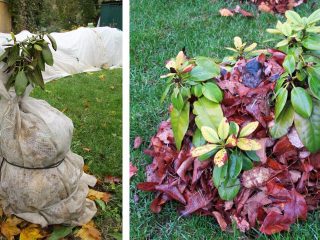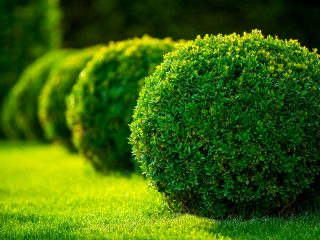Content
A magnificent tropical shrub with huge gramophone-shaped flowers in natural conditions grows up to 5 m in height. The plant scatters seeds on its own, easily multiplying in nature. Brugmansia from seeds at home is much lower: from 1 to 2 m. It is heat-loving and demanding in terms of growing conditions. The flowers have a strong aroma and come in many shades: yellow, white, pink, cherry, orange and even gradient colors.
The beauty of an unusual flower more than compensates for the efforts spent on growing and breeding it. He is the pride of every gardener, and the main decoration of the winter garden, greenhouse and personal plot.
Features of growing Brugmansia from seeds at home
Growing Brugmansia from seeds in a mid-latitude climate is a troublesome task; you need to maintain temperature conditions, protect from drafts, provide the lighting the plant needs, periodically take the flower outside and, as it grows, change the container in which it grows. For the summer season, it is recommended to replant it in open ground, and with the onset of cold weather, place it again in a pot and take it indoors, where it is maintained at a suitable humidity and air temperature.
During the first year of Brugmansia's life, 3 to 5 transplants into a larger container will be required. Then the tub is changed once a year. Do not use dark-colored containers - this leads to disruption of air circulation and overheating of the roots.
At the end of February, the plant must be pruned; Brugmansia tolerates this procedure well. Having gotten rid of damaged, diseased and dry branches, it is necessary to shorten healthy shoots by 1/3 of the length, without touching the side branches and branches with peduncles. The first pruning of a shrub grown at home is carried out the next year after it blooms. Young plants do not need this.
For wintering, Brugmansia is transferred to the basement with a temperature of +5÷10ºС. With the onset of April, it is slowly adapted to outdoor conditions, taken out into the garden for a few minutes.
When to sow Brugmansia seeds for seedlings
The best time to sow Brugmansia seeds is January-March.The plant will have enough time to germinate.
How to plant Brugmansia seeds
The soil and containers are prepared in advance. In order for Brugmansia seeds to sprout amicably, you need to plant them correctly and provide the crops with the necessary care. Even a slight violation of planting or growing conditions can destroy the plant.
Preparation of planting containers and soil
The soil for sowing Brugmansia at home should be loose, with a neutral pH. A nutritious substrate of peat, humus and loamy soil is suitable. After mixing the soil well, it should be disinfected with a manganese solution. A drainage layer is placed at the bottom of the planting container and covered with prepared soil. It is preferable to choose a container for planting seeds without holes in the bottom in order to retain moisture in the soil longer. For subsequent transplants, it is better to choose ceramic or clay tubs. In plastic containers, Brugmansia roots become very hot and overcook.
Seed preparation
The plant independently scatters seeds, which form in the form of an oblong pod.
They ripen in September. To propagate Brugmansia by seeds, you need to hang gauze bags or food bags on the branches in advance. When the seed pod cracks, all the material will remain inside. If the seed has not burst, you can cut it from the bush with scissors, carefully divide it in half and remove the seeds.
Brugmansia seeds are quite unusual in appearance. They are large, irregularly triangular in shape, similar to bark.To increase the level of germination, it is recommended to soak the collected seeds for 48 hours in a heteroauxin solution, having previously removed the top cover, or keep them for 24 hours in a mixture of aloe, honey and rainwater.
Rules for planting Brugmansia from seeds
To avoid sprouting, it is better to immediately sow Brugmansia seeds in individual cups or cassettes. The glass is filled 2/3 with prepared soil, moistened and loosened. Having placed the seed, lightly press it into the ground and sprinkle it on top. The seeds should be deepened no more than 1 cm.
If sowing is done in solid containers, without partitions, then it is recommended to place the seeds at a distance of 3 cm from each other. The crops are moistened with clean water from a spray bottle, covered with film and placed on a window on the south side. To improve seed germination, you need a lot of light and warmth.
To avoid moisture stagnation, crops are ventilated daily and the soil moisture level is checked.
When will Brugmansia seeds germinate?
With proper planting and care, Brugmansia seeds will germinate in 10-20 days at home. But this rarely happens. Typically, in the middle zone, seedlings appear after 1.5 months. The duration of seed germination is influenced by many factors:
- freshness of planting material;
- environmental conditions (air humidity, temperature, lighting);
- quality of crop care;
- varietal characteristics.
As soon as the replacements germinate, the cover must be removed.
This kind of hardening will help the plant adapt to being in the garden in the summer.
How to grow Brugmansia from seeds
Growing Brugmansia from seeds at home is not always effective. In addition, the grown plant may not fully correspond to the varietal characteristics. In cold climates, it makes no sense to grow tropical shrubs. Southern countries have the best conditions for the growth of Brugmansia; in mid-latitudes it is permissible to grow the flower in home greenhouses or winter gardens. A plant planted permanently in open ground will die after the first winter.
Optimal conditions for growing Brugmansia from seeds
Good lighting, nutrition, watering and a suitable temperature for the shrub are the key to future success.
Containers with Brugmansia should be placed in a well-lit place, protected from gusts of cold wind, drafts and direct rays of the sun. Insufficient lighting at home affects the color of the leaves and greatly stretches the shoots. It is not allowed to place the plant near heating devices.
In the room it is necessary to maintain high air humidity and temperature within +22÷28 ºC. Constantly monitor soil moisture. On hot days, it is advisable to water in the evening.
Organizing the wintering of a plant can be done in various ways:
- Warm wintering – means staying indoors all winter at +22÷25 ºC. Brugmansia needs to organize the required daylight hours using lamps. Water and fertilize in the same way as in summer. In return, Bugmansia will delight you with long-lasting flowering.
- Cold winter allows the plant to rest. In this case, it is necessary to maintain the temperature in the room at +8÷12 ºC and water as needed. Brugmansia will wither and drop its leaves. With the onset of spring budding, watering will need to be resumed.
Among the many varieties, the seeds of Brugmansia aromagica alba are the most adapted to home cultivation in average climates. The tree-like shrub has become so “cultivated” that it no longer grows in nature.
Watering and fertilizing
Watering is the most important stage of care. Brugmansia needs abundant watering with warm water, since the large leaves of the plant evaporate a lot of moisture. On hot days, it is recommended to water once a day; on cool days, 2 waterings per week are sufficient.
Excessive moisture causes snails and caterpillars to appear on the leaves, and insufficient ventilation of the room can provoke an attack by ticks. Too dry soil leads to the death of the plant.
Starting from two months of age, seedlings are fed with ammonium nitrate. Lack of nitrogen slows down their growth, the leaves turn yellow and fall off. With the beginning of flowering, potassium-phosphorus fertilizers must be applied every 7-10 days.
Picking
If the seeds are sown in a common container, picking is carried out after the appearance of the fifth true leaf. Seedlings with a small lump of earth on the roots are transplanted into individual cups and buried down to the cotyledon leaf.
The next transplant into a pot with a diameter of 10 cm will be required when the seedling outgrows the third container. Brugmansia loves transplants, this way it takes root and grows better.
When to plant Brugmansia in open ground
Transplantation into open ground is possible as early as April next year, when the air temperature is at least +5÷10ºC. In warm climates, Brugmansia can be planted in the fall of the year of sowing. Transplantation is carried out by transferring the plant from the tub into the ground.The selected area should be protected from drafts and direct sunlight. The hole is dug in advance, in proportion to the Brugmansia rhizome.
After the summer season, the bush is dug up again and transplanted into a tub, moving it to a warm room.
When will Brugmansia bloom from seeds?
Huge flowers adorn the bush from July to mid-December. It blooms 2-3 years after sowing. In some cases, Brugmansia (pictured), grown from seeds, can bloom luxuriantly all summer, decorating the site. The number of blooms depends on the variety and growing conditions.
Conclusion
It takes a long time for Brugmansia to germinate from seeds at home and requires patience, but the result is worth the effort. A gorgeous bush, densely strewn with huge flowers, arouses the admiration and envy of neighbors and random passers-by. It should be remembered that the culture is poisonous, so it must be handled with extreme caution: do not inhale the aroma deeply, do not grow it in rooms where children live.















